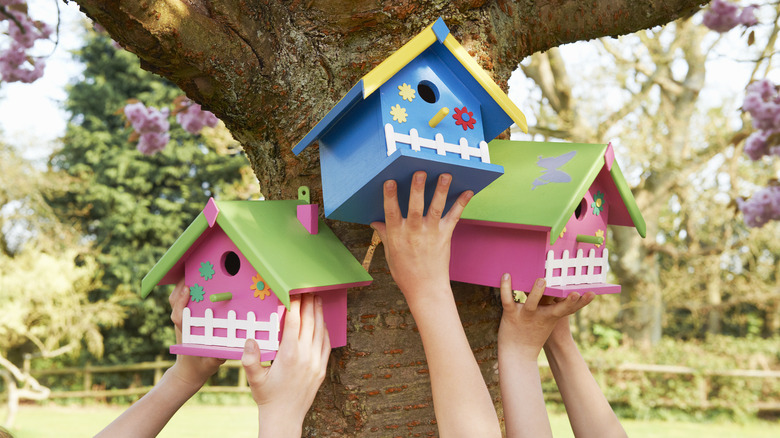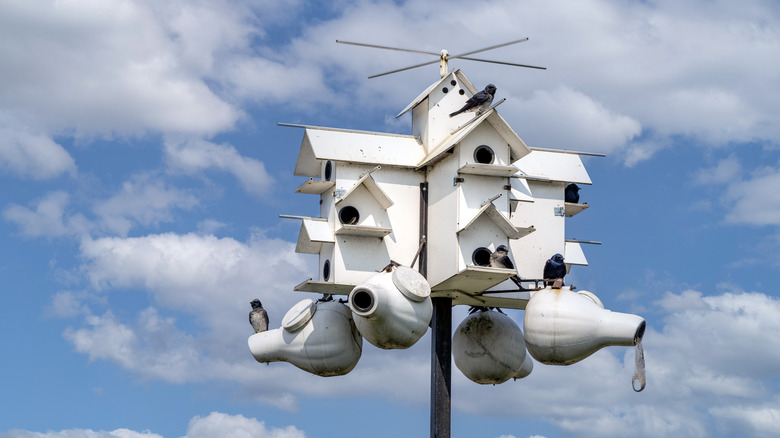Why A Birdhouse Is The Best Way To Attract This Beautiful Blue Songbird To Your Yard
We may receive a commission on purchases made from links.
Many types of birds build nests to hold their eggs and hatchlings right on a tree branch quite successfully. One dark blue songbird — the Purple Martin — is different. This bird species prefers nesting in cavities like those found in trees hollowed by woodpeckers, holes in tall cacti like saguaros, and cliff crevices. With these spaces more frequently occupied by other types of birds, and fewer suitable spots available due to population growth and environmental factors, Purple Martins have come to depend more and more on bird houses erected by neighboring humans for shelter and a spot to rear their young.
In comparison to traditional single-family birdhouses, Purple Martin houses typically have a number of compartments to offer cozy havens for pairs of nesting birds. Essentially, they're like bird apartment buildings with one large house containing eight to a dozen or so individual units. Alternatively, they can take the form of a cluster of gourd-shaped compartments. In fact, natural gourds were used by American Indians to provide homes for Purple Martins long before European settlers arrived, and they can still be made into bird houses. If you don't feel like you're crafty enough to create an organic birdhouse using a group of gourds, Purple Martin houses can be easily purchased online through bird supply shops or via Amazon.
Benefits of adding a Purple Martin house to your yard
Purple Martins like their houses to be placed in open areas so that they have plenty of space to dive and swoop around while feeding. This can make them even more fun to watch than a few feathered friends grazing at a bird feeder in your yard. Beyond attracting more colorful birds to your yard for viewing, you might find that you enjoy the sounds made by Purple Martins as much as their high-flying antics. Their songs vary depending on whether they're mating or calling young birds back to the nest, but they range from lively chirping to chooing sounds.
You may have also heard that Purple Martins are good for mosquito control. That's true since they feed solely on flying insects, but only to a minor degree. Only a small percentage of their diet comes from eating mosquitoes. They do dine on some other pesky bugs, though, including wasps and house flies in addition to winged ants, beetles, moths, and others. So, if you're concerned about controlling flying insects in your yard and want a natural way to do it, consider putting up a house to attract a flock of Purple Martins and enjoy watching them work their insect-eliminating magic at the same time.

